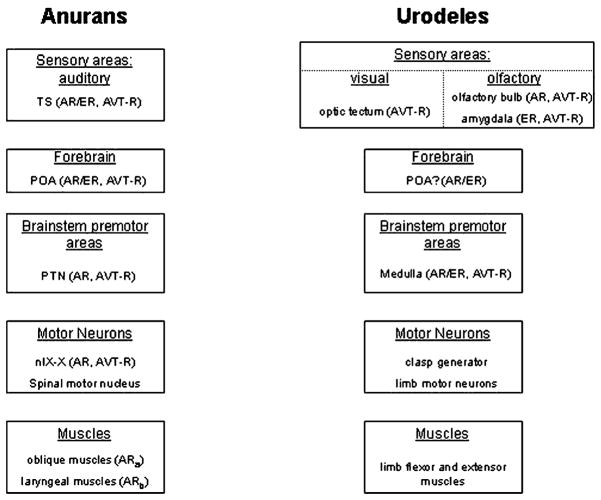Fig. 2.
Schematic diagram depicting the neural areas involved in AVT-mediated social behavior in anurans and urodeles, including representative brain regions and their hormonal targets. Although the sensory modalities mediating social behavior in the two groups are different, the basic framework for how the behaviors are controlled is quite similar. Both groups rely on sensory input to brainstem premotor nuclei (with or without mediating input from forebrain regions) which then modulate specific neuromuscular machinery. AVT-R appears to be restricted to neural loci upstream of motor regions, suggesting that AVT might have more of a role in modulating upstream circuitry rather than influencing motor output. Details for the anuran model are based on Emerson and Boyd (1999). Anatomical information for the urodele model is based on Thompson and Moore (2000), steroid hormone receptor information is based on Davis and Moore (1996), and AVT receptor distribution is based on Boyd and Moore (1991). Abbreviations: AR, androgen receptor; AVT-R, arginine vasotocin receptor; ER, estrogen receptor; n. IX–X, motor nucleus of cranial nerve IX–X; POA, preoptic area; PTN, pretrigeminal nucleus; TS, torus semicircularis.

